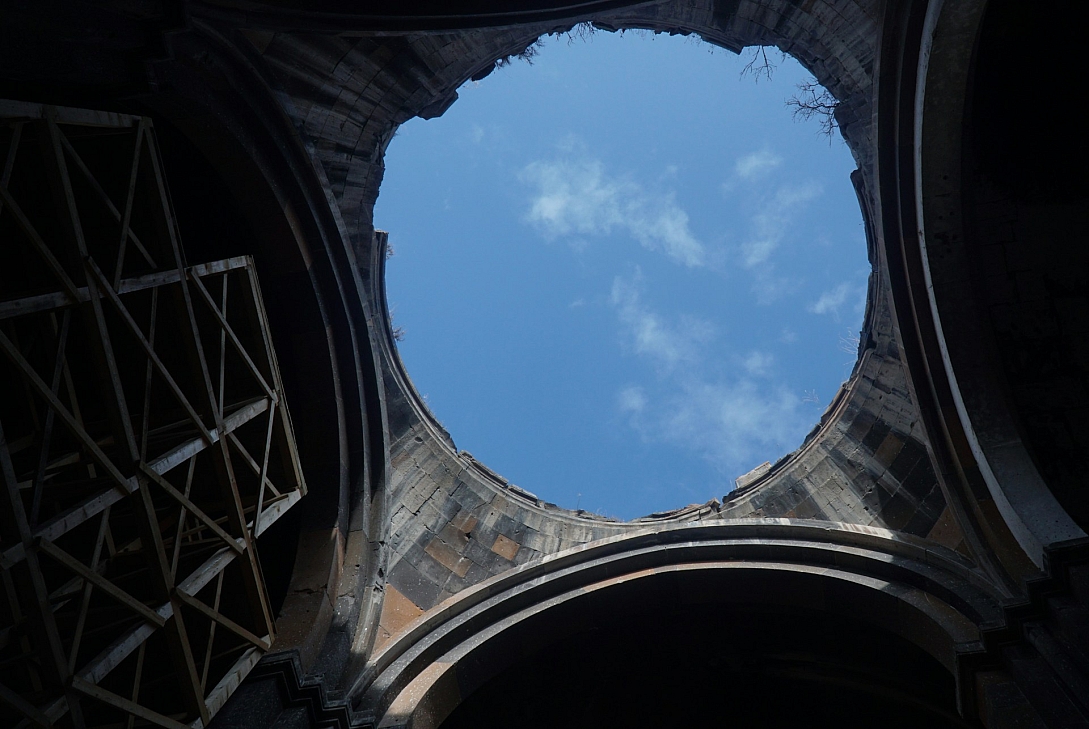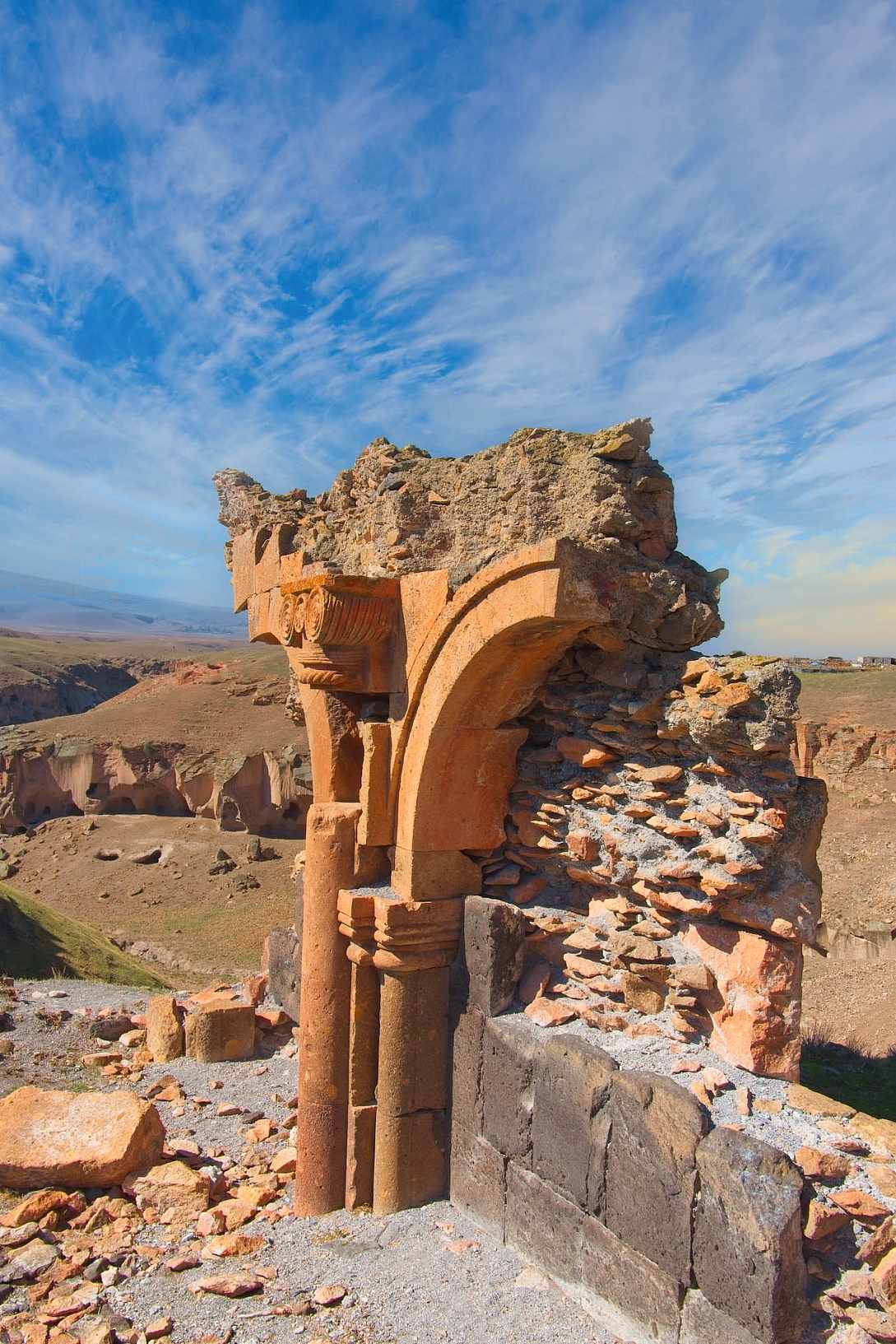
The Fascinating History of Ani: A Forgotten City in Türkiye
Cradled within the rugged landscapes of eastern Türkiye (Turkey), the forgotten city of Ani stands as a testament to a bygone era of power, prosperity, and cultural exchange.
With its rich history and architectural opulence, Ani offers a captivating glimpse into the past. Explore the intriguing story of this ancient city and its remarkable remains.
Ani: The Medieval Capital
Ani was established in the 10th century CE as the capital of the Bagratid Armenian kingdom. Strategically located along the Silk Road, the city flourished as a thriving centre of trade, attracting merchants, artisans, and scholars from various civilizations. It became known as the "City of a Thousand and One Churches" due to its numerous religious structures that adorned the cityscape.
Architectural Marvels
Ani's architectural wonders mesmerize visitors with their grandeur and craftsmanship. The Cathedral of Ani, also known as the Church of Holy Redeemer, is a magnificent example of Armenian ecclesiastical architecture. Its intricate stone carvings, elegant arches, and soaring domes evoke a sense of awe. The Church of St. Gregory, with its graceful design and decorative elements, showcases the artistic prowess of the era.

Other notable structures include the Church of Tigran Honents, the Church of St. Gregory of Tigran Honents, and the Church of the Holy Apostles. These churches once served as important religious and cultural centres, attracting pilgrims and scholars from far and wide.
Cultural Exchange and Commerce
Ani's location on the Silk Road made it a melting pot of cultures, ideas, and trade. Merchants from Europe, Asia, and the Middle East converged in the city, bringing with them goods, knowledge, and artistic influences. The city thrived as a hub of cultural exchange, fostering intellectual and artistic growth. Ani's multicultural ambience is evident in its architecture, where Armenian, Byzantine, and Seljuk architectural elements blend harmoniously.
The commercial significance of Ani was further enhanced by its strategic position as a gateway between East and West. The city bustled with activity as merchants traded silk, spices, ceramics, and precious metals. The streets were lined with bustling markets, workshops, and caravanserais, where travellers could rest and trade their goods.
Decline and Abandonment
Ani's fortunes began to decline in the 12th century due to a series of invasions, earthquakes, and political instability. The devastating earthquake of 1319 dealt a severe blow to the city, leading to its gradual abandonment. The once-thriving metropolis fell into ruins, its structures left to the mercy of time and nature.

Throughout its history, Ani experienced multiple invasions and conflicts that contributed to its decline. Some of the major invasions and conflicts include:
Seljuk Turks
In the late 11th century, the Seljuk Turks launched an invasion and captured Ani, marking a significant turning point in the city's history. The Seljuks, a powerful Turkic dynasty, brought about changes in the ruling class and introduced their own architectural and cultural influences.
Mongol Invasions
In the 13th century, the Mongols under the leadership of Genghis Khan and later his grandson Hulagu Khan, launched devastating invasions across the region. Ani was not spared from their destructive campaigns, and the city suffered significant damage during this time.

Byzantine Empire
Ani's location close to the Byzantine Empire led to conflicts and power struggles between the Armenian rulers and the Byzantines. The Byzantines made attempts to assert control over the city, leading to intermittent periods of conflict and influence.
Various Invasions and Internal Struggles
Ani also faced invasions from various other forces, including Kurdish and Arab tribes, as well as internal struggles and rivalries among local Armenian nobles. These conflicts further weakened the city and contributed to its eventual decline.
It is important to note that while specific invasions and conflicts played a role in Ani's history, the city's decline was not solely the result of external factors. Earthquakes, natural disasters, and internal political instability also contributed to the gradual abandonment and deterioration of Ani over the centuries.
UNESCO World Heritage Site

Recognizing the historical significance and architectural beauty of Ani, the site was inscribed as a UNESCO World Heritage Site in 2016. Efforts are being made to preserve and protect the remaining structures, ensuring that the legacy of this ancient city endures. Restoration projects, archaeological research, and educational initiatives aim to shed light on Ani's past and promote its cultural value.
Ani, the forgotten city of Türkiye, offers a fascinating journey into the past. Explore its medieval grandeur, wander through its awe-inspiring ruins, and envision the vibrant life that once thrived within its walls. As a UNESCO World Heritage Site, Ani serves as a reminder of the importance of preserving cultural heritage and unravelling the mysteries of history. Discover this hidden gem and be captivated by the allure of Ani's fascinating history.




